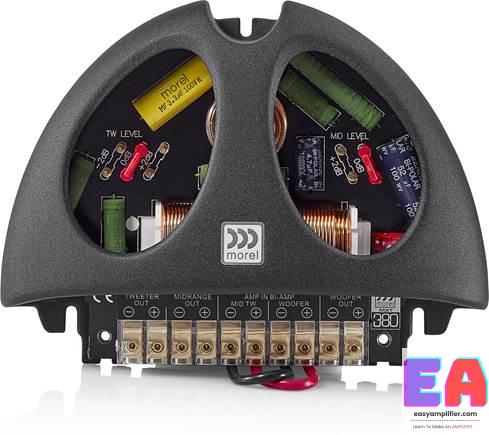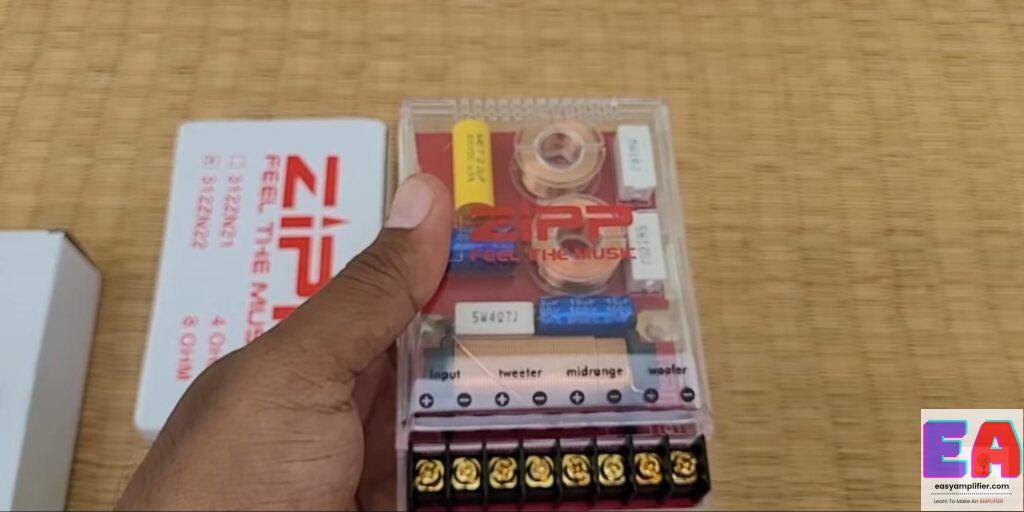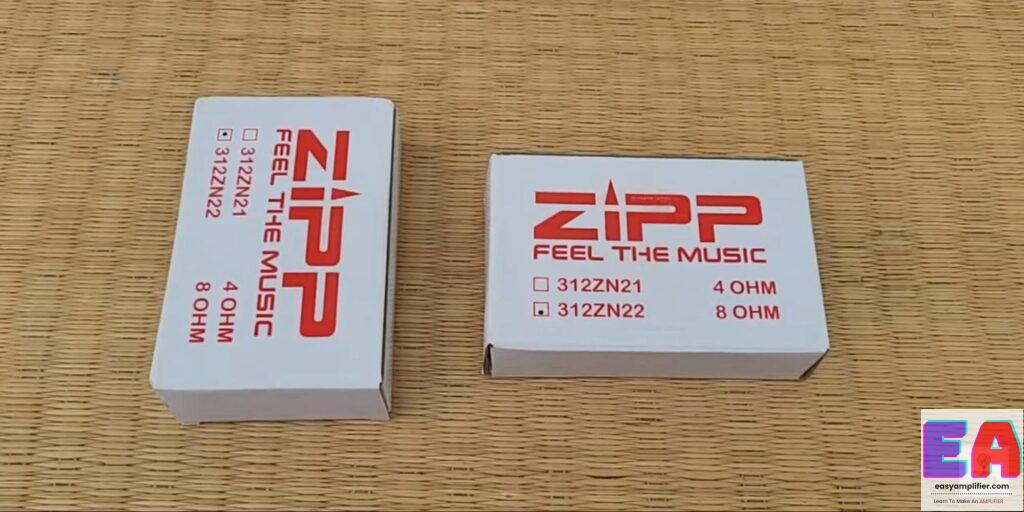Hi music lovers today in this article we are going to read about this zipp 3 way crossover With 8 ohms impedance review and connection details
Table of Contents
What is 3 way crossover
A crossover is an electronic device that takes a single input signal and creates two or three output signals consisting of separated bands of high-, mid-, and low-range frequencies. The different bands of frequencies feed the different speakers, or “drivers,” in a sound system: tweeters, woofers, and subwoofers.

think of a crossover network as an audio traffic cop, directing highs to your tweeters, midrange to your woofers, and low bass to your sub.
Without a crossover, a messy, sonic “traffic jam” results. Your midrange and sub duplicate too many of the same frequencies and your sub wastes time trying to put out high notes it wasn’t meant to handle. A “fatal pile-up” could also occur, with your tweets being destroyed by some renegade tractor-trailer of a bass note thumping along in the wrong audio lane.
Because they’re essential, you’ll find crossovers in some form almost any time speakers are present. For instance, if your home stereo uses a pair of 2-way bookshelf speakers, it uses 2-way crossovers (inside the speaker boxes). Within each crossover, a high-pass filter blocks the lows but passes the high-frequency notes to the tweeter, while a low-pass filter blocks the highs and passes low-frequency notes onto the woofer.
The crossover “networks” of coaxial, full-range car speakers are usually built into the speakers and often consist of small electrical components like coils or capacitors. Crossovers for 3-way systems, those systems utilizing tweeters, midrange drivers, and subwoofers, include, besides high- and low-pass filters, “bandpass” filters which play frequencies between two points by utilizing both a high-pass and low-pass in the same filter network. So, for example, you could have a midrange driver only playing 100 Hz to 2500 Hz.
Active or passive?
There are two basic kinds of crossovers: active and passive. Passive crossovers don’t need the power to filter the signal as desired. Active crossovers require power and ground connections, but give you much more flexibility and fine-tuning control over your music.
Active systems
A sound system is termed “active” when each driver (tweeter, woofer, sub) has its channel of amplification. This dramatically increases the available power, dynamic range (softest to loudest sounds), and your control of the system’s tonal response over the whole audio spectrum.
An active crossover gets wired between the receiver and amplifier and cuts out the unwanted frequencies before the amp wastes energy boosting them, so the amp can focus on only the frequencies you want to hear. Active crossovers usually have volume controls on every channel or pair of channels so you can keep all the “voices” of the different drivers in balance. Some active crossovers include other sound-processing features like equalization for further tweaking of the sound to your personal satisfaction.
The only potential disadvantage of an active crossover is that since it requires +12V, ground, and turn-on connections, it presents more of a challenge to install and set up than a passive crossover. But with a little time and care this shouldn’t be a problem, and the rewards and advantages of an active crossover make it clear why you’ll find one in virtually every competition-level car audio system. Likewise, stereo systems tuned for high-quality sound will make use of crossovers to keep the speakers playing clean and clear.
Passive crossovers
A passive crossover doesn’t need to get hooked up to a power source to work. There are two kinds of passive crossovers: component crossovers that connect the amplifier and speakers, and in-line crossovers that fit in between the receiver and the amp.
Where to use this 3 way crossover?
Whenever you hear a song through Speakers from the amplifier Think about how you connect the speaker and tweeter. Many of people Connect tweeter directly From the speaker some of you Connect tweeter with capacitors. But this 3 way crossover Will give the Perfect output to your speaker, Tweeter, and woofer. This Zipp 3 way crossover Will Give you the perfect Frequency for each speaker (Mid-range, Tweeter, and woofer).
This crossover comes in two variants One Is a two-way crossover and 3 way crossover In a two-way crossover You can Connect one woofer and One tweeter. In the 3 way crossover We can connect three speakers. As I said earlier One midrange Speaker, One Woofer, and one Tweeter.
Today we going to read about this zipp 3 way crossover

This is a 3 way crossover so you can connect 3 speakers. This Crossover only works with one channel if you want to use this for your stereo amplifier Then You have to Use another crossover to get the best results. All The connection details are mentioned on this Board. This is a passive crossover so you don’t need to give an additional power supply to This board. And remember to give This board will Operate without bass Treble Board.

So you can enjoy original sound effects from this zipp 3 way crossover circuit. and remember To hear good sound effects you have to Use quality speakers to enjoy the perfect crystal-clear Audio Output. There is only one drawback to using this board which is The audio output level will be a little bit low because of the crossover Filters. Otherwise, you can enjoy crystal-clear Audio. This crossover is available for sale from me. If you want this board you can ask me in the comment section or Chat with me through WhatsApp.
don’t forget to follow me on facebook

